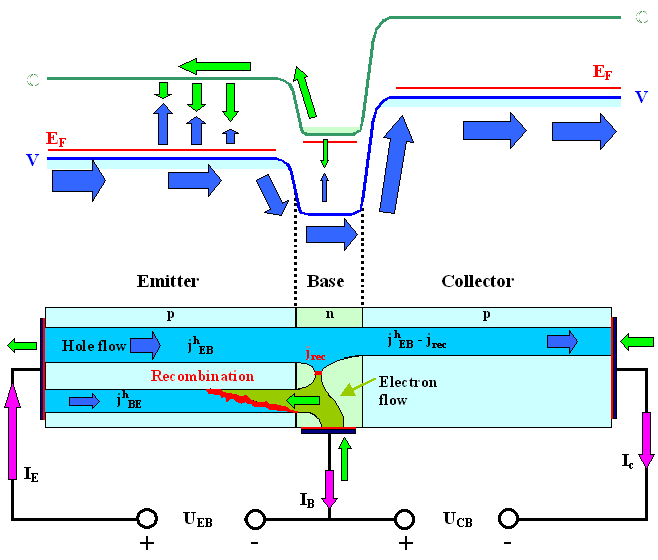


In either case, the current’s direction in the base is the same as the collector. In the NPN, the polarity is the opposite and current flows in the emitter and out the collector. Current flows in the collector of a PNP and out of the emitter. In between these structures is a small layer of the other doping agent called the “base”. Each type has a large collector element and a large emitter element which are doped in the same way. There are two types of BJT – PNP and NPN. A BJT has three pins – the base, collector, and emitter – and two junctions: a p-junction and n-junction. The Bipolar Junction Transistor (BJT) is a current-driven device (in contrast, MOSFET is voltage-driven) that is widely used as an amplifier, oscillator, or switch, amongst other things. Understanding the difference between n- and p-type semiconductors What is BJT? Because gate terminal voltage is positive or negative, channel conductivity is decreased.Įnhancement mode: when the gate terminal’s voltage is low, the device does not conduct unless more voltage is applied to the gate terminal. This often sees MOSFETs being used in low-power devices or as building blocks to reduce power consumption.ĭepletion mode: When the gate terminal’s voltage is low, the channel exhibits maximum conductance.

This level of insulation roots low power consumption and is the primary benefit of this type of transistor. The gate terminal itself is made from metal and is detached from the source and drain terminals using a metal oxide. Likewise, in n-channel MOSFETs, the source and drain terminals are made of n-type semiconductor. In p-channel MOSFETs, the source and drain terminals are made of p-type semiconductor. This means that in total, there are four different types of MOSFET. Both of these types can either be in enhancement or depletion mode (see figure 1). MOSFETs are available in two types, “ p-channel” and “ n-channel”. The voltage that is applied across the gate controls how much current flows into the drain. In a MOSFET, the drain is controlled by the voltage of the gate terminal, thus a MOSFET is a voltage-controlled device. Metal-Oxide- Semiconductor Field-Effect Transistor (MOSFET) is a kind of Field Effect Transistor (FET) that consists of three terminals – gate, source, and drain.


 0 kommentar(er)
0 kommentar(er)
